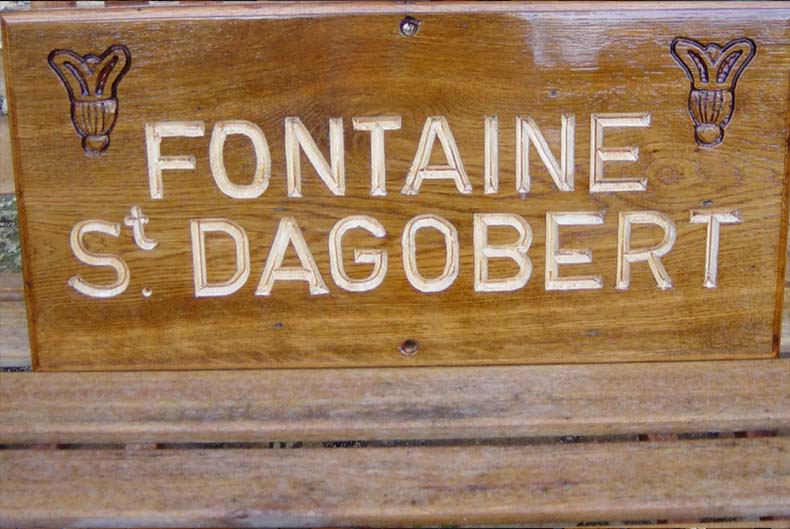It is found in the centre of a 1,500- hectare stretch of forest, managed by the National Office of Forests, Departmental Service of the Meuse, Stenay division. The ancient Arphays fountain, now called the Fountain of Saint-¬Dagobert, has been a place of pilgrimage since the end of the 9th Century, This pilgrimage took place without interruption until the French Revolution. Several attempts were made to start it again during the course of the 19th Century and the beginning of the 20111 Century. This finally happened on 10th September 1983.
It was near this spring that King Dagobert II met his death, assassinated on the afternoon of 23rd December 679. The water that flows from this spring is always pure and is analyzed regularly. It is a calm, restful grove, full of birdsong, a natural place for meditation. It is here where the pilgrims, who come to honor the holy king on the last Saturday of August, assemble after a walk of several kilometers across the forest.
At the heart of History, Legend and Nature...
The Haut Charmois estate goes back to at least Merovingian times, since the presence of a Gallo-Roman villa, the remains of which are still to be discovered, is mentioned in the ancient texts. By tradition, Charmois was the first place that the body of King Dagobert II was brought to.
But ... let us briefly go back over these far-off events.
King Dagobert ll, thirteenth king of Austrasia, was threatened by Ebrorn, who was Mayor of the palace to Thierry, king of Neustria. Ebrom administered Neustria unchecked and he wanted to seize Austrasia as well. Under the guidance of Wulfoad, his own Mayor of the palace, Dagobert II had given his son Sigebert a share of his throne. But the King of Austrasia's sensible precautions were thwarted by Ebroin.
The year 679 was coming to its end and Dagobert was living in his royal house, SATHANACUM - known today as Stenay - where he was to spend the Christmas holiday. On 23rd December, he went out hunting in the forest of "Wepria" (known today as Woevre) with many followers. Around the middle of the day, tired from the hunt, the king sat down ni;ar a fountain, which ran near to a large oak, to take some rest. It is still called ARPHAYS, and the section of the forest known as "SCORTlA".
One of the servants among the conspirators struck the king while he was praying. Dagobert, last king of a wide and powerful realm, perished, dying while doing good.
The king's body was taken first to the villa of Charmois, during the evening of 23rd December, then to the basilica of Sathanacum, which at that time was dedicated to Saint Remi. All the dignitaries of the realm came to mourn the death of the sovereign.
What became of his son Sigisbert? No-one knows. According to some, he died before his father.
Others say it was at the same time or after. Still others have him slipping through the clutches of the conspirators.
A pilgrimage linked to the holy king, assembling in as many as 36 parishes and passing through the forest to the FOUNTAIN OF SAINT DAGOBERT, was perpetuated without a break, from the 9111 century until the Revolution.
Today, the SAINT DAGOBERT PILGRIMAGE includes a religious ceremony and the historical reminder. On this occasion, the NATIONAL OFFICE OF FORESTS gives a talk about the life of the forest. The pilgrimage takes place each year on the last Saturday of the month of August.
Text and thanks: cercle Saint-Dagobert.

